by Nick Taylor
Hello, ghosts and ghoulies of The Film Experience! Did y’all have a good October? I did! Much like many film-obsessives, I used this month as an excuse to seek out horror films I've had lounging on my to-watch list from across all corners of the genre. With Halloween soon approaching, I figured it would be fun to share five of the best from my diary while my roommates and I try to trick the host of an upcoming Halloween party into putting on Troll 2. Without further ado, let us begin! More after the jump...
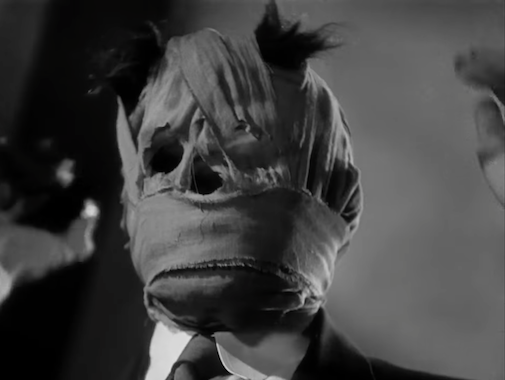
The Invisible Man (1933, dir. James Whale)
I’ve come to accept that as much as I enjoy James Whale’s willingness to mash different tones together and vacillate so boldly between pure horror, broad comedy, camp perversion, and liminal-at-best sexuality, I’ll never quite be able to accept these shifts at the cost of overall coherence to the films themselves. Still, Whale’s films also possess a genuine sense of unpredictability, and it’s easy to roll with the moment-to-moment pleasures and sustained gambits Whale so generously offers. For example: it’s hysterical to realize that because his invisibility doesn’t extend to his clothing, the titular Man is committing all of his dastardly crimes in the nude. Another example: Claude Rains’ entire performance, a fantastic distillation of scientific genius, deteriorating sanity, and pure cunt behavior, all wrapped around the real fear that his invisibility is truly irreversible. The visual effects used to dramatize his invisibility hold up beautifully, and his costumes are worth marveling at whenever he bothers to wear clothing.
The Invisible Man is currently streaming on The Criterion Channel, Peacock, and can be rented via most major online platforms.
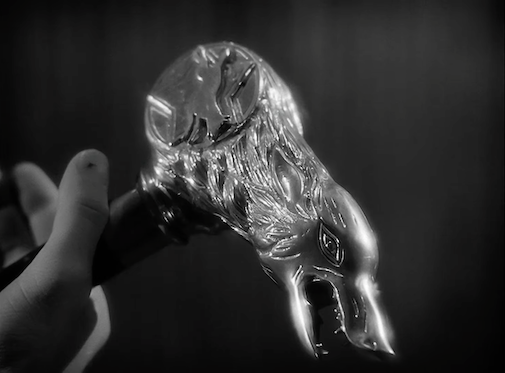
The Wolf Man (1941, dir. George Waggner)
Where Whale’s films exhibit a playful, pushy willingness to experiment with tone at some cost to overall consistency, George Waggner’s direction of The Wolf Man offers a contrasting approach. The workmanlike presentation of Larry Talbot’s crumbling sense of self and Wales’ moody, subtly wrong atmospheres endows this supernatural tale with a matter-of-factness that only exacerbates its tragedy. Sharp, silvery cinematography, crisp pacing, and the strongest ensemble of any Universal horror film I’ve seen further aid the sense of richly yet economically evoked despair. As unadorned as its aesthetic frequently is, the value of its most striking imagery hits without fail, especially the glistening silver wolf’s-head handle of a walking stick. The werewolf transformation itself is oddly unpersuasive, and the romance is only productive under the thematic lens of unwanted, life-changing intrusion no matter what the characters profess. It’s perhaps the least scary film in this list, and it’s barely even trying to scare, but the building dread and the hideous, sad culmination of the final 20 minutes is exactly what great horror is meant to achieve.
The Wolf Man is currently streaming on The Criterion Channel, Peacock, and can be rented via most major online platforms.
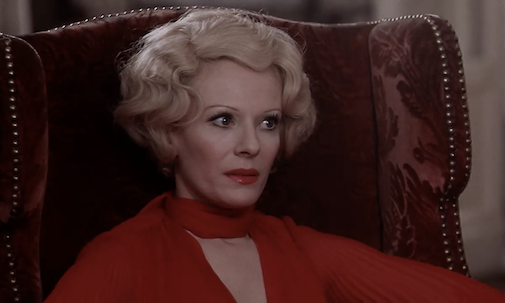 Daughters of Darkness (1971, dir. Harry Kümel)
Daughters of Darkness (1971, dir. Harry Kümel)
We now arrive at the portion of this list I like to refer to as “Oops! All vampires!”. Anyways, there’s a lot of Stuff floating around Daughters of Darkness, all of which threaten at one point or another to emerge as either a central facet or an ancillary, even underdeveloped nub of its story about a jaded, experienced vampire and her aid setting their sights on a newly married couple. What’s up with the husband’s mother, and what can we possibly glean about him when she finally picks up the phone? Is the Countess (Delphine Seyrig, exquisite) really that Elizabeth Bathory, and does it matter if she is? Will either of the figures who recognize the Countess from her stay 40 years actually do anything about their suspicions? Daughters of Darkness is a strange object, with director Harry Kümel pouring a tremendous amount of textile sensuality and atmospheric dread into a script he co-wrote with three other writers. As potent as that dread is, it’s hard to capture how the film even reaches 90 minutes, let alone 100. Maybe it won’t put you under its spell, but like a red scarf draped over a lamp, sometimes a simple embellishment can transform a space so completely it wins you over.
Daughters of Darkness is currently streaming on The Criterion Channel, Tubi, and Vudu.
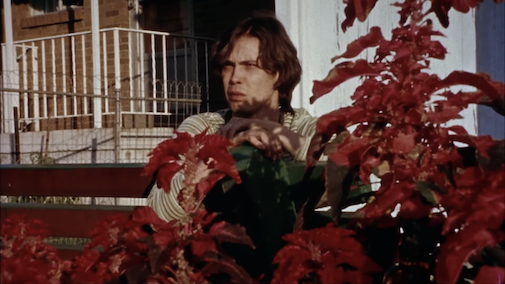 Martin (1977, dir. George Romero)
Martin (1977, dir. George Romero)
My favorite of the films on this list, and perhaps the saddest of them to boot. Martin is a young man shipped off to live in the derelict town of Braddock, PA with his cousin Cuda, a Lithuanian Catholic at least two generations older than him, as well as the man’s granddaughter Christina. On the train ride to Pennsylvania, he sedates a woman, strips, lies next to her unconscious body, and slices her forearm open, orgasmically quivering as her blood hits his skin and savoring the only human intimacy he can conceive of having. He cleans it up and acts like he was never there. Martin's memories and fantasies are littered with romantic, black-and-white inserts of willing victims and persecuting priests with dubious ties to reality at best. Martin labels himself a vampire, rejecting classical aspects of the mythology and connecting new strands to his own desires and anguishes. Cuda agrees with this label without quite learning who or what Martin is, and though Martin sneers at the garlic and crosses his cousin wields against him, the threat of a stake through the heart still resonates. Here, vampirism stands in for a lost sense of lost identity, cleaving hopelessly for a sense of self in a world with almost nothing to offer but pain. It’s thoughtful, tragic, artfully in sync with its dilapidated milieu, and utterly its own.
Martin can be found uploaded directly on YouTube.
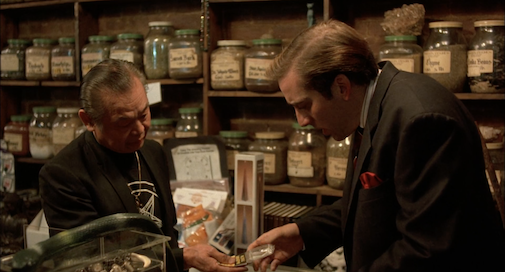 Vampire’s Kiss (1988, dir. Robert Bierman)
Vampire’s Kiss (1988, dir. Robert Bierman)
Pairs nicely with Martin as stories about a guy fashioning himself as a vampire to solidify his own sense of self, albeit transported to the very different setting and tone of “late-’80s yuppie satire in New York”. More than that, it’s a Nicolas Cage Movie, and according to historical records, it’s the earliest sighting of such a Movie, singularly defined by his total, outre commitment in voice and body for a film that seemingly doesn't ask or demands it. Vampire’s Kiss theoretically has more to offer besides Cage, from the grim unreality it gives New York to its vision of abusive white masculinity where the main character is almost exclusively surrounded by women, save for one scene chortling about his abusing a subordinate to a room of fellow executives. But the whole film is warped around Cage’s inspired garishness. He makes Loew’s transformation a magnification of every awful tendency and affectation the man already had while piling on grotesque new ones - for all the new cruelties vampirism inspires, it’s all there from the jump. Maria Conchita Alonso’s grounded, humiliated sincerity feels utterly out of place with Cage’s excess redefining the film, yet the contrast is the only real frisson anywhere to be seen.
Vampire’s Kiss is currently streaming on Apple TV, The Criterion Channel, and Vudu.
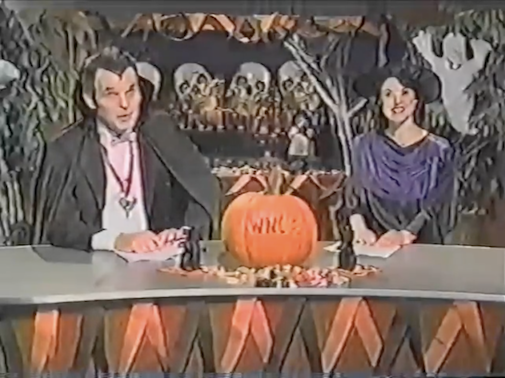
As a last grab-bag of candy to hurl out the front door as you walk away from my porch, I’ll quickly name drop some other seminal horror flicks I’ve caught semi-recently: Nosferatu the Vampyre, WNUF Halloween Special, Tales From the Hood, Ginger Snaps, Cure, and Death Bed: The Bed That Eats. There’s also the horror docs Woodlands Dark and Days Bewitched: A History of Folk Horror and Horror Noire, as well as the surrealist short film Dementia. If you’re looking for new releases to sink their teeth into you, try out Smile, Pearl, X, and Mad God. And please, please share your own favorites in the comments. We can’t survive all these seven-day curses if we don’t share our faves to as many people as possible!